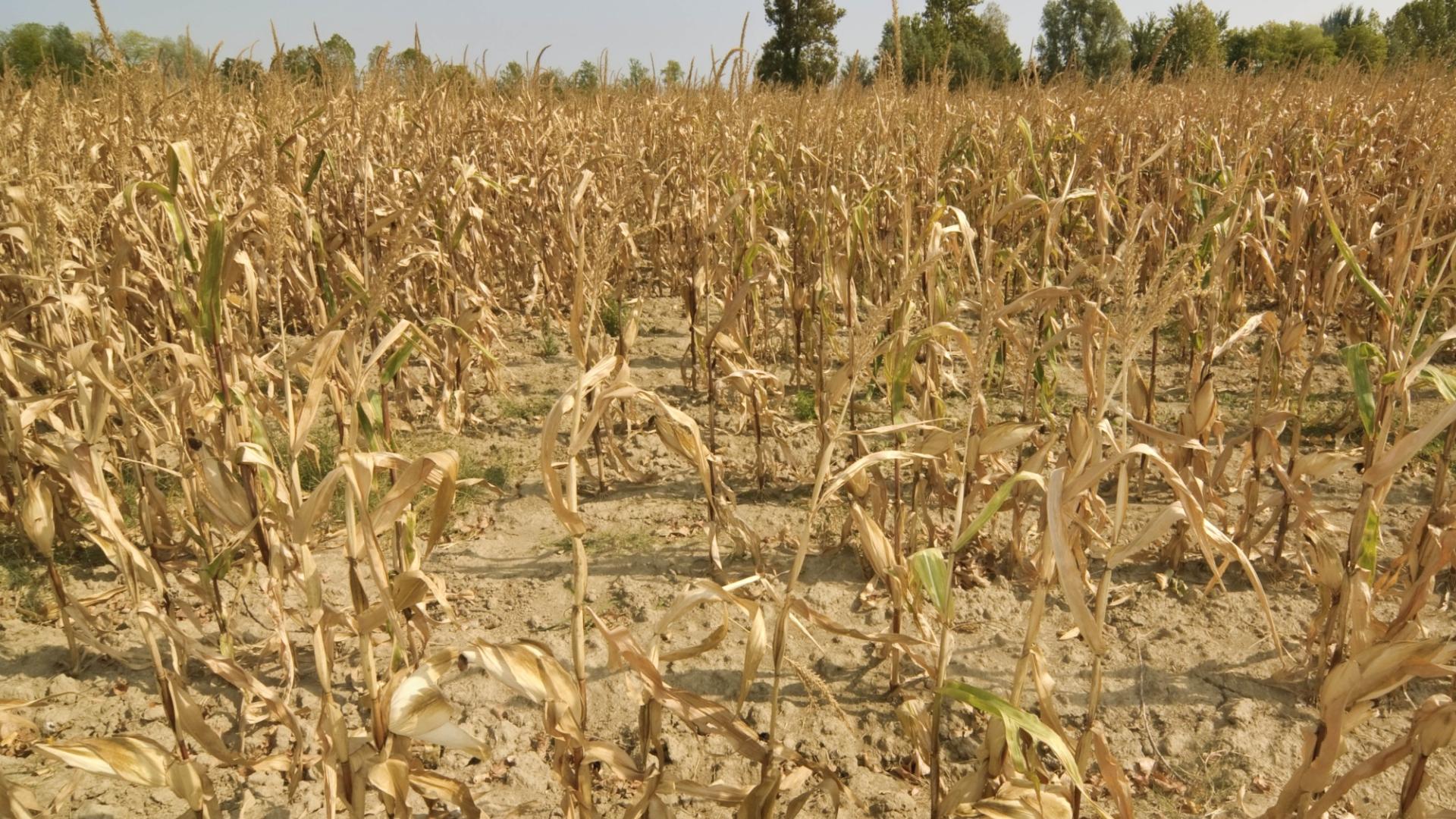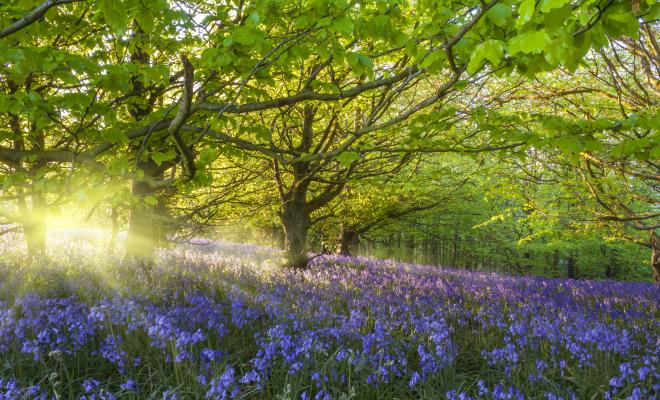29 Mar 2019
Introduction
Politicians often make pledges to plant trees.
With a fanfare they like to announce a number they will plant. They tend to say less about the types of tree they will plant, how these will be managed and maintained, and how they will make sure any new forests will work for wildlife as well as for people.
Rarely do they make the connection to climate change and the need for the UK to become much more forested in order to remove carbon pollution from the atmosphere and restore nature and ecosystems.
In the UK, the government found out how much people care about trees and forests when it tried to sell off the publicly-owned forest estate in 2011.
The government backed down and has since started to regard trees, tree cover, woodland and forests more positively as part of sustainable land management, improving conditions for nature and as part of a national strategy to both curb climate change and adapt to its impacts. However, the government’s ambitions fall far short of what is needed.
Trees, woodlands and forests provide multiple benefits by:
- Supporting many species of wildlife from bugs and birds to other plants
- Providing clean air
- Aiding flood protection by storing excess water and stabilising soils
- Regulating global temperatures and shading and cooling our local streets
- Being visually attractive and great to visit for relaxation, recreation and exercise
- Absorbing carbon from the atmosphere and storing it – and by keeping soils healthy and intact, tree roots and forest cover help to lock in the even higher levels of carbon contained in our soils
- Acting as natural barriers, protecting soils and crops from strong winds and heavy rainfall and providing shade and shelter for livestock.
This briefing addresses how more trees, woodlands and forests will support aims to help combat climate change, as well as protect and restore nature, and recommends a doubling of woodland cover across the UK by 2050.
UK trees and climate change
How many trees do we have?
Much of the UK was once covered in trees and forests. Most of that has been lost, and only about 2% of the UK’s original forests are left, leaving the UK as one of the least wooded nations in Europe.
Compared with an EU average of about 38%1 of land area being covered in woodland, just 13% of the UK’s total land area has woodland cover2:
- 18% in Scotland
- 15% in Wales
- 10% in England
- 8% in Northern Ireland.
In England, 43% of neighbourhoods have less than 10% tree cover, and 84% have less than 20%. For the most accurate data on and map of tree cover in England, including lone trees and street trees, see our trees map.
Land in private ownership which is used for farmland, traditional forestry and other uses will be crucial in re-afforestation.
Public sector forestry policy is a devolved matter, and many of the targets discussed in this briefing relate only to England. A UK-wide approach will be needed for action on climate change, soil health and restored nature.
The role of trees and forests in mitigating climate change
UK forests and forest soils are already a significant carbon sink, or store of carbon. This makes protecting the forests we already have and preventing further degradation a priority.
Adding to and increasing existing UK forest cover is an important part of accelerating the drawdown of carbon from the atmosphere and contributing towards the ‘net zero’ goal that the UK is committed to under the 2015 Paris Climate Agreement.
A 2009 study by the National Assessment of UK Forestry and Climate Change Steering Group examined the role of trees, woodlands and forests in the UK’s action on climate change.3
The study concluded that “UK forests and forest soils contain significant amounts of carbon and that the strength of the carbon sink they provide will decline over the next few years unless practice and policy change.”
It also stated “unequivocally” that “a significant contribution to mitigation could be made by maintaining and increasing the rates at which CO2 is removed from the atmosphere by the UK’s forests – the abatement of emissions”.
What is the government doing?
How many trees has the government pledged to plant in future?
Following the government’s climb down from attempting to sell England’s public forest estate, in 2012 the Independent Panel on Forestry recommended that the government should commit to increase woodland cover in England from 10% to 15% by 2060.4
However, the government rejected the Panel’s recommendation as unfeasible, stating that: “The recent rate of progress has been between 2,000 and 3,000ha per year, which would reach 11% woodland cover by 2060.
The Panel’s recommendation implies a 500% increase on this rate sustained for the next 47 years. This is unlikely to be achievable or affordable. We, therefore, agree that 15% is a reasonable level of woodland cover to aim for although not within a specified timescale.”5
Instead, the government set a lower aspiration to increase woodland cover in England from 10 to 12 per cent by 2060 as enshrined in the government’s 25 Year Environment Plan: “Increasing woodland in England in line with our aspiration of 12% cover by 2060: this would involve planting 180,000 hectares by end of 2042.”6
In its Clean Growth Strategy the government relies on early progress with extensive planting in the 2020s.7 This tallies with the Conservative Party’s 2015 General Election manifesto, which also pledged to plant 11 million more trees by 2020.8
The Clean Growth Strategy states that “our indicative pathway could involve planting up to 130,000 hectares of new woodland and implement plans for farmers to plant more trees across England.”9
The government has also committed to planting 50 million trees in 25 years for a new ‘Northern Forest’10.
It is unclear whether these are additional trees to the above tree planting figures, or part of the same.
New forests and tree planting are welcome, but the targets fall well short of the levels identified as the minimum necessary by the Royal Society and Royal Academy of Engineering who are calling for higher numbers (at least 1.2 million hectares, see below)11.
Moreover, though extensive, the Northern Forest will cover just 0.1 million hectares of available land for forestry and is expected to sequester only one-hundredth of the 15 mega tonnes of CO2 annually (MtCO2 pa) required from UK forestry to meet carbon removal needs identified by the Royal Society and Royal Academy of Engineering. They note that the way the Forest is being planned “is not optimising carbon removal and involves relatively small uptake per hectare.”
Some of the government’s aims are also vague; for example, it’s unclear how the government arrives at its figures for what tree planting levels and woodland cover should be – especially if they are to play their full role in benefiting wildlife, storing carbon, preventing flooding and so on.
The government’s commitments on tree-planting and forestry also omit a number of crucial areas. In particular:
Questions remain over adequate funding for tree-planting.
Funding for the government’s pledged level of tree-planting to 2020 has been allocated under the Countryside Stewardship scheme12, but it is uncertain where funding will come from after 2020, and whether the complex incentives, mechanisms and agreements with landowners will be in place to maintain impetus post 2020.
The Clean Growth Strategy makes no mention of the need to protect and restore existing forests.
For example, ancient woodland is among our most precious and irreplaceable habitat and has been inadequately protected. Ancient woodland sites have been routinely damaged or destroyed by government-backed road and development schemes, encroached on by commercial planting of non-native conifers, or affected by harmful invasive species. In its recent revisions to the planning system in England the government has offered belated better protection for ancient woodland, although even the revised policy permits their destruction by infrastructure projects judged to be in the national interest.13
The Clean Growth Strategy also lacks a commitment to support the development of agroforestry.
Agroforestry is the practice of incorporating trees into pasture and cropland, which has considerable benefits for storing carbon (soil carbon sequestration) and flood prevention.
How much more tree cover do we need?
We will need significant afforestation in the UK to help achieve a net zero climate target.
Increasing UK forest cover is also likely to require concomitant changes in diet to free up the necessary land area and to make sure we do not simply displace agriculture, potentially leading to deforestation in other countries.
Several studies have made the case for greatly increasing UK forest cover, well in excess of current official targets:
1. The UK’s Committee on Climate Change (CCC) has identified afforestation and agroforestry as important measures to make up for the emissions from those sectors that are resistant to reducing to zero (agriculture, aviation, and parts of industry). The CCC says afforestation and agroforestry levels will now need to be higher than those it previously recommended - 30,000 hectares a year of woodland and 2.3% of agroforestry on agriculture land - because the Paris Agreement requires deeper cuts in the UK’s greenhouse gas emissions14. Indeed, the CCC recommends increasing UK forest cover to 19% of land area.15
2. The Royal Society and Royal Academy of Engineering have called for “a high degree of forestation” on 1.2 million hectares (Mha) of land, adding to the UK’s total current woodland area of 3.2 Mha, equivalent to 5% of all UK land, or 80% of ‘available land’. Doing so would utilise poorer quality or non-agriculture land. They also suggested dietary changes to free-up additional land for afforestation. 5% extra forest cover over the existing 13% equals 18% which is well on the way to our 26% forest cover target.
3. In its Zero Carbon Britain project the Centre for Alternative Technology (CAT) has modelled various scenarios involving major afforestation alongside big shifts in diet to free up land for trees, to draw down and store carbon.
4. In Zero Carbon Britain 203016, CAT recommend planting 1.37 million hectares of trees between now and 2030. This would amount to 5.6% of the UK land surface, so a total forest cover of 18.6% of the UK by 2030.
5. In its later Zero Carbon Britain: Rethinking the Future17, CAT carried out more detailed land-use modelling and concluded that the UK should double its forest cover from 3 million hectares to 6 million hectares (i.e. from 13% to 26%) to deliver on negative emissions.
Friends of the Earth recommends that the UK government set a target of doubling UK forest cover – from 13% to 26% by 2050.
This is equal to an additional 3 million hectares of land and is greater than the 18% set out by the Royal Society and Royal Academy of Engineering, and the 19% recommended by the CCC, and would need to be facilitated by dietary change to free up land.
This higher ambition recognises the UK and globe need to not only achieve net zero emissions in keeping with the Paris Agreement, but also deliver net negative emissions in the second half of the century.
The growth of trees in forests planted in the first half of the century will have an important role in contributing to this.
Choosing the right species: mixed woodland not monoculture
Trees and forests play many vital roles, but not all trees and forests are the same.
For example, broadleaf, deciduous trees and mixed woodlands will support many more wild species than conifer forests and plantations comprising just a few species. Because conifer species tend to grow faster than broadleaf species, they will absorb more carbon at a faster rate than most slow growing deciduous trees.
Having the right trees and forests in the right places, and these being well managed and maintained over their whole lifetimes and knowing what types of woodland are needed for what task, are key.
Post WWII polices led to large tracts of land in the UK being turned into commercial forestry usually comprising a narrow range of species considered useful for timber production - such as Larch, Sitka spruce, Scots and Corsican pines, Douglas fir and silver birch.
However, many objected to such bland monoculture plantations, both on visual amenity grounds and because such forests supported little in the way of wildlife and often affected and altered soil type and quality.
Fortunately, a change in approach is underway as the Forestry Commission and others realise the necessities and benefits of having a larger variety of tree species, which makes for far more biodiverse habitat as well as playing a role in flood protection, healthier soils and carbon absorption.
Also, changing the financial incentives for investing in biodiverse, multi-functional forestry is needed to get away from the blunt system used for many decades which gave millions of public funds for vast plantations of questionable benefit.
Diversity of species is also vital because trees and forests will themselves be vulnerable to climate change and the rising temperatures, unpredictable weather patterns (such as wetter winters and drier summers) and the influx of pests and diseases that climate instability will bring.
A sensible policy on trees and forests will address both the role they need to play in mitigating climate change, and how they themselves can be resilient to changing conditions.
Recommendations
The government should:
1. Set a target to double UK forest cover from 13% to 26% by 2050.
2. Review its tree planting and forestry policies and targets to maximise their role in climate mitigation and the restoration of nature, soil condition and flood prevention, as part of decarbonising land use, delivering the UK share of the Paris Climate Change Agreement and post-2020 biodiversity commitments.
3. Prioritise agroforestry, tree planting and woodland creation in its post Brexit agricultural policies as part of action to improve soil health, land condition and farming’s role in improving nature across the UK.
4. Ensure that revised planting and forestry aims are supported by fiscal and other incentives to help landowners and farmers to retain and create woodland.
5. Move from picking round numbers of trees to be planted to specifying and being clear about the tree species and the extent of woodland and forestry needed in different parts of the UK, and the purposes they will serve (carbon storage, boosting biodiversity, flood prevention, improving soils etc).
- 1https://www.forestresearch.gov.uk/tools-and-resources/statistics/forestry-statistics/forestry-statistics-2018/international-forestry/forest-cover-international-comparisons/
- 2Forest Research, Woodland Statistics www.forestresearch.gov.uk/tools-and-resources/statistics/statistics-by-topic/woodland-statistics/
- 3Combating Climate Change – A Role For UK Forests: Main Report, An Assessment of The Potential of The UK's Trees and Woodlands to Mitigate and Adapt to Climate Change, 2009, National Assessment of UK Forestry and Climate Change Steering Group, pages 216-217 www.tsoshop.co.uk/bookstore.asp?FO=1159966&Action=Book&ProductID=9780114973513&From=SearchResults
- 4Independent Panel on Forestry, Final Report, 2012, page 31 www.gov.uk/government/publications/independent-panel-on-forestry-final-report
- 5Government Forestry and Woodlands Policy Statement: Incorporating the Government’s Response to the Independent Panel on Forestry’s Final Report, 2013, page 39 www.gov.uk/government/publications/government-forestry-policy-statement
- 6A Green Future: Our 25 Year Plan to Improve the Environment, 2018, p26 www.gov.uk/government/publications/25-year-environment-plan
- 7Clean Growth Strategy, 2017 www.gov.uk/government/publications/clean-growth-strategy
- 8Conservative Party 2015 General Election manifesto https://www.theresavilliers.co.uk/sites/www.theresavilliers.co.uk/files/conservativemanifesto2015.pdf
- 9Government Forestry and Woodlands Policy Statement: Incorporating the Government’s Response to the Independent Panel on Forestry’s Final Report, 2013, page 105 www.gov.uk/government/publications/government-forestry-policy-statement
- 10Northern Forest: Plan to plant 'ribbon of woodland' across England, BBC 2018 www.bbc.co.uk/news/uk-42591494
- 11Royal Society and Royal Academy of Engineering, 2018, Greenhouse Gas Removal https://royalsociety.org/topics-policy/projects/greenhouse-gas-removal
- 12Forestry Commission and Natural England (2017), Countryside Stewardship opens for 2017 www.gov.uk/government/news/countryside-stewardship-opens-for-2017
- 13Revised National Planning Policy Framework (NPPF) www.gov.uk/government/publications/national-planning-policy-framework--2, July 2018
- 14Committee on Climate Change, 2016, UK Climate Action following the Paris Agreement, www.theccc.org.uk/wp-content/uploads/2016/10/UK-climate-action-following-the-Paris-Agreement-Committee-on-Climate-Change-October-2016.pdf
- 15Committee on Climate Change, 2018, Land Use: Reducing emissions and preparing for climate change www.theccc.org.uk/wp-content/uploads/2018/11/Land-use-Reducing-emissions-and-preparing-for-climate-change-CCC-2018.pdf
- 16Centre for Alternative Technology, Zero Carbon Britain 2030 https://cat.org.uk/download/26061/
- 17Centre for Alternative Technology, Zero Carbon Britain: Rethinking the Future, p.82, p.106, Figure 3.34 https://www.cat.org.uk/info-resources/zero-carbon-britain/research-reports/zero-carbon-rethinking-the-future/




